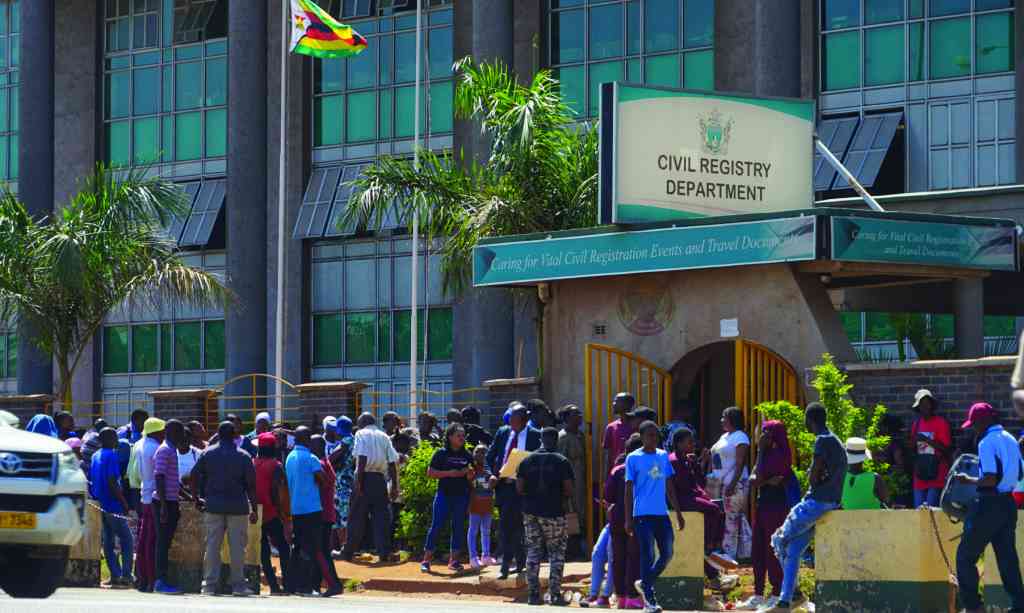
THE Reserve Bank of Zimbabwe (RBZ), a pivotal institution in the country's financial sector, launched its first National Financial Inclusion Strategy 1 (NFIS1) (2016-2020) in March 2016.
As this blueprint’s lifespan lapsed, a review of the inclusion journey began in December 2020 and concluded in January 2022. This review was critical as it provided stakeholders with the opportunity to evaluate the NFIS1, underlining the RBZ's commitment to financial inclusion.
The primary objectives of NFIS1 were to enhance the country's overall access to formal financial services, aiming to increase the percentage from 69% in 2014 to at least 90% by 2020. It also sought to boost the proportion of banked adults from 30% in 2014 to at least 60% by 2020.
To achieve these goals, NFIS1 specifically targeted groups such as women, youth, MSMEs, rural communities, and smallholder farmers, among others, demonstrating its commitment to inclusive and equitable financial access.
According to the 2022 FinScope consumer survey, the percentage of formally served individuals (banking and formal non-bank) increased from 69% in 2014 to 83%, while the financially excluded decreased from 23% to 12%.
The 2022 FinScope survey also revealed significant progress in the MSME sector, with 40% of business owners now banked, 95% formally served, and 60% women-led, compared to 14%, 18%, and 57% respectively in the 2012 MSME survey.
This progress is a testament to the effectiveness of NFIS1 and provides a promising outlook for the future of financial inclusion in Zimbabwe.
Under NFIS1, the authorities took a proactive stance in bolstering microfinance, recognizing the economy's bias towards MSMEs and increased informality. This was achieved through the establishment of the Zimbabwe Women’s Microfinance Bank and the Empowerment Bank (Youth Bank), as well as the strengthening of credit infrastructure with the establishment of Credit Registry, Collateral Registry, and Credit Guarantee Scheme. These initiatives underscore the adaptability of NFIS1 to the changing needs of the economy.
- Rampaging inflation hits Old Mutual . . . giant slips to $9 billion loss after tax
- Monetary measures spur exchange rate stability: RBZ
- Zim deploys IMF windfall to horticulture
- Banker demands $21m from land developer
Keep Reading
While the preceding milestones attained through the NFIS1 (2016-2020) are highly commendable, a granular analysis shows that the benefits are not trickling down promptly and fairly to all economic agents.
For instance, just like any other commercial bank, established women and youth banks still require collateral security for loans borrowed. Yet, due to the historically dominant ideology of patriarchy coupled with high perceived corruption in government, weak property rights, and poor economic management, the majority of women and youth cannot afford exorbitant bank charges and collateral security demands.
This situation underscores the pressing need to address the challenges small and informal businesses face in accessing finance.
More so, the shrinking fiscal space and rising public debt have forced the government to develop tendencies of exploiting companies and households through high electronic transfer taxes.
After spending unsustainably between 2015 and 2018, as evidenced by a combined US$10 billion unaccounted budget overrun and a budget deficit averaging 8%, the Treasury introduced the now unpopular ‘2% tax’ officially known as the Intermediated Money Transfer Tax (IMTT).
This regressive tax, which is levied on all electronic transactions, is increasing market transaction costs, forcing or alluring economic agents to build compromising structures to mitigate or cover the high costs. In other words, economic agents in Zimbabwe have become victims of technological advancement and innovation.
From a quantitative analysis point of view, Zimbabwe has scored big in financial inclusion metrics, but the qualitative aspects remain lacking. For instance, due to high bank charges, bureaucracy, and uncertain exchange rate policies, many economic agents are minimizing the use of formal channels. The nation also lacks enabling digital infrastructure, compounded by high broad-band data costs, low digital literacy rate, poor skills support, and low national electricity coverage.
NFIS 2 (2022-2026)
Amid poor qualitative improvements in financial inclusion (FI) aspects, the authorities launched National Financial Inclusion Strategy 2 (NFIS2). This strategy is anchored on wealth creation, equitable income distribution, financial system stability, and improved welfare and poverty reduction.
Its four key pillars (and enablers) are as follows: Financial Innovation (conducive macro-economic environment); Consumer Protection and Financial Capability (legal and regulatory environment); Microfinancing, MSMEs and Entrepreneurship Development (institutional coordination and political commitment); and Devolution (data availability).
Whereas authorities are celebrating quantitative milestones achieved to date, a lot needs to be done for Zimbabwe to attain and fully enjoy the benefits of financial inclusion. Some of these aspects in need of a revisit include, among others:
Tax regime: The prevailing tax regime in Zimbabwe is regressive and characterised by high tax rates. For instance, all electronic transactions in both local and foreign currency attract a 2% tax. These taxes are punitive and, hence, are pushing Zimbabwe back into a cash economy characterised by the high cost of money, informality, and tax evasion. Urgent tax reforms are needed to lower the cost of tax compliance and the use of formal financial markets.
Capital controls: Zimbabwe is characterised by increased restrictions on capital flows. For example, all exporters are forced to cede 40% of their forex export proceeds, meaning that a significant portion of their earnings is not immediately available for domestic use. This, coupled with stringent restrictions on the repatriation of profits, hinders the efficient allocation of resources and the growth of the economy. From the lens of free market proponents, financial repression prevents the flow of capital to where it is most profitable and efficient. It also forces domestic investors to gain a lower rate of return on investment and have a lower income.
Digital infrastructure: The traditional role of information technology (IT) infrastructure is rapidly reshaped by the global digital transformation of business. In a highly integrated global economy presenting unlimited opportunities for disruption and constant innovation, the demands placed on IT are changing rapidly. Increased access to digital infrastructure brings three key benefits: cost, reliability, and speed of transactions. However, over the years, public investment in these infrastructures is dwindling. It is crucial to recognise the potential benefits and the urgent need for increased investment in digital infrastructure. Also, with national access to electricity estimated at 52,75% (% of the population), most folks living in rural and resettlement areas are constrained in using electric gadgets.
Property ownership: Many disadvantaged groups, like women and youth, do not own valuable properties. Also, there is weak protection of property rights in Zimbabwe, particularly in agriculture, thus inhibiting easy access to finance. For instance, many farmers struggle to access loans due to a lack of bankable land leases to use as collateral. Only the wealthy and connected few with quality assets for collateral security will enjoy access to low-cost formal borrowing channels. Their counterparts are subjected to high-cost informal sources of finance.
Financial charges: Bank charges have become the primary source of income for some deposit-taking institutions in Zimbabwe instead of loan interest income. These exorbitant bank charges levied on households already earning below the poverty line are reducing disposable incomes and subduing the use of formal financial channels. Also, the high broadband data costs are inhibiting households from using convenient, reliable, and fast e-services like Internet banking. All these balloon costs of transacting, thereby affecting the overall market pricing of goods and services.
Unsustainable public debt: The ever-rising public debt has a bearing on the economy's financial sector. For instance, Zimbabwe’s high indebtedness led to a debt default in the early 2000s and subsequent accumulation of external arrears. Resultantly, the nation can no longer easily access concessionary external sources of financing to augment shallow domestic credit markets. Also, increased domestic public borrowing to finance the budget deficit crowd the private sector, particularly small and medium businesses. As such, authorities should clamp the burgeoning public debt stock, which is exerting pressure on long-term interest, tax, and inflation rates.
National registration: In Zimbabwe, most processes and procedures, such as attaining national registration documents like identity cards, are centralised and concentrated in urban areas. This disadvantages those living in rural and marginalised areas as they are crowded out from accessing formal financial services due to the lack of these documents. Banks are obligated to adhere to Know Your Customer (KYC) principles, which are easily enforceable through authentic documents. As such, to reduce the proportion of undocumented rural citizens, the government needs to decentralize these processes across the nation.
Financial literacy: The benefits of financial inclusion are realized when economic agents, particularly households, are financially literate. Financial literacy can be defined as people’s understanding of financial concepts and their skills and ability to manage money and make informed financial decisions. Literature shows this is key because the more financially literate individuals are, the more likely they are to plan for retirement, invest in stocks, and make better refinancing decisions. These financial decisions (large and small) impact the wealth accumulation of individuals over a lifetime and contribute to the shortening of generational cycles of poverty and social stratification. However, there is a lack of a deliberate and holistic approach by responsible authorities to increase the financial literacy of the citizenry.
Sibanda is an economic analyst and researcher. He writes in his personal capacity. — brasibanda@gmail.com or X: @bravon96.






